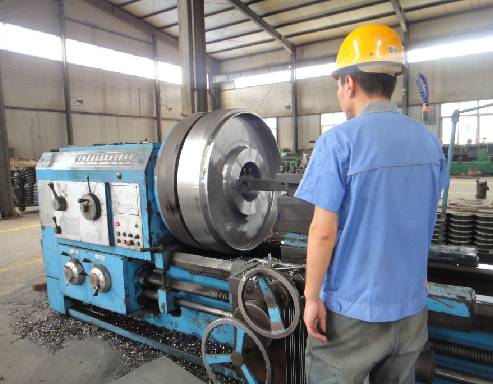 Afrikaans
Afrikaans  Albanian
Albanian  Amharic
Amharic  Arabic
Arabic  Armenian
Armenian  Azerbaijani
Azerbaijani  Basque
Basque  Belarusian
Belarusian  Bengali
Bengali  Bosnian
Bosnian  Bulgarian
Bulgarian  Catalan
Catalan  Cebuano
Cebuano  Corsican
Corsican  Croatian
Croatian  Czech
Czech  Danish
Danish  Dutch
Dutch  English
English  Esperanto
Esperanto  Estonian
Estonian  Finnish
Finnish  French
French  Frisian
Frisian  Galician
Galician  Georgian
Georgian  German
German  Greek
Greek  Gujarati
Gujarati  Haitian Creole
Haitian Creole  hausa
hausa  hawaiian
hawaiian  Hebrew
Hebrew  Hindi
Hindi  Miao
Miao  Hungarian
Hungarian  Icelandic
Icelandic  igbo
igbo  Indonesian
Indonesian  irish
irish  Italian
Italian  Japanese
Japanese  Javanese
Javanese  Kannada
Kannada  kazakh
kazakh  Khmer
Khmer  Rwandese
Rwandese  Korean
Korean  Kurdish
Kurdish  Kyrgyz
Kyrgyz  Lao
Lao  Latin
Latin  Latvian
Latvian  Lithuanian
Lithuanian  Luxembourgish
Luxembourgish  Macedonian
Macedonian  Malgashi
Malgashi  Malay
Malay  Malayalam
Malayalam  Maltese
Maltese  Maori
Maori  Marathi
Marathi  Mongolian
Mongolian  Myanmar
Myanmar  Nepali
Nepali  Norwegian
Norwegian  Norwegian
Norwegian  Occitan
Occitan  Pashto
Pashto  Persian
Persian  Polish
Polish  Portuguese
Portuguese  Punjabi
Punjabi  Romanian
Romanian  Russian
Russian  Samoan
Samoan  Scottish Gaelic
Scottish Gaelic  Serbian
Serbian  Sesotho
Sesotho  Shona
Shona  Sindhi
Sindhi  Sinhala
Sinhala  Slovak
Slovak  Slovenian
Slovenian  Somali
Somali  Spanish
Spanish  Sundanese
Sundanese  Swahili
Swahili  Swedish
Swedish  Tagalog
Tagalog  Tajik
Tajik  Tamil
Tamil  Tatar
Tatar  Telugu
Telugu  Thai
Thai  Turkish
Turkish  Turkmen
Turkmen  Ukrainian
Ukrainian  Urdu
Urdu  Uighur
Uighur  Uzbek
Uzbek  Vietnamese
Vietnamese  Welsh
Welsh  Bantu
Bantu  Yiddish
Yiddish  Yoruba
Yoruba  Zulu
Zulu Optimizing Conveyor Performance with Effective Drive Rollers for Smooth Material Handling
Drive Rollers for Conveyors Essential Components in Material Handling
In the world of material handling and logistics, conveyors play a pivotal role in streamlining the movement of goods. At the heart of these systems are drive rollers, which are essential components that facilitate the efficient operation of conveyor belts. This article explores the importance, functionality, and types of drive rollers, emphasizing their significance in various industries.
Understanding Drive Rollers
Drive rollers are cylindrical components that utilize rotational motion to move conveyor belts along a designated path. As the backbone of a conveyor system, these rollers are responsible for imparting the necessary force to transport materials from one point to another. Typically positioned at the discharge end of the conveyor, drive rollers can also be found in various configurations throughout the system to enhance operational efficiency.
Importance of Drive Rollers
The significance of drive rollers in conveyor systems cannot be overstated. They directly impact the speed, efficiency, and reliability of material transportation. High-quality drive rollers ensure seamless movement, reducing the likelihood of jams and mechanical failures. Furthermore, they contribute to the overall durability of the conveyor system, as they are designed to withstand heavy loads and continuous use.
In various industries, including manufacturing, warehousing, and logistics, the performance of drive rollers can influence productivity and operational costs. A well-functioning conveyor system equipped with reliable drive rollers minimizes downtime, increases throughput, and enhances the overall efficiency of the supply chain.
Types of Drive Rollers
There are several types of drive rollers, each engineered to meet specific requirements of different conveyor systems
drive rollers for conveyors

1. Straight Drive Rollers These are the most common type, characterized by a cylindrical design that provides a straightforward drive mechanism. They are ideal for standard applications where uniform motion is required.
2. Crowned Drive Rollers With a slightly raised center, crowned drive rollers ensure that the conveyor belt remains centered during operation, minimizing the risk of misalignment and wear. This design is particularly useful in systems where belt tracking is critical.
3. Lagged Drive Rollers These rollers have a textured surface, often made from rubber or a similar material. The lagging enhances grip and friction, making them ideal for transporting heavier or bulk materials. They are commonly used in environments requiring extra traction, such as mining or heavy manufacturing.
4. Belt-Driven Rollers In some systems, roller drives are powered through an external belt system rather than direct motor attachment. These are suitable for applications requiring flexibility in roller positioning and speed management.
5. Motorized Drive Rollers These rollers come with integrated electric motors, allowing for a more compact design and reducing the need for additional drivetrains. They offer improved energy efficiency and are commonly found in modular conveyor systems.
Maintenance and Care
To ensure the longevity and efficiency of drive rollers, regular maintenance is crucial. This includes routine inspections for wear and tear, lubrication of moving parts, and alignment checks to prevent excessive strain on the roller bearings. Proper maintenance not only extends the lifespan of drive rollers but also enhances the overall performance of the conveyor system.
Conclusion
Drive rollers are a fundamental aspect of conveyor systems, serving as the driving force behind material movement in various industries. Understanding their types, functionalities, and maintenance needs is essential for businesses looking to optimize their material handling processes. Investing in high-quality drive rollers and maintaining them properly can significantly improve efficiency, reduce downtime, and contribute to the overall success of a company's logistics operations. As industries continue to evolve, the importance of reliable drive rollers will remain a cornerstone of effective material handling solutions.
-
Revolutionizing Conveyor Reliability with Advanced Rubber Lagging PulleysNewsJul.22,2025
-
Powering Precision and Durability with Expert Manufacturers of Conveyor ComponentsNewsJul.22,2025
-
Optimizing Conveyor Systems with Advanced Conveyor AccessoriesNewsJul.22,2025
-
Maximize Conveyor Efficiency with Quality Conveyor Idler PulleysNewsJul.22,2025
-
Future-Proof Your Conveyor System with High-Performance Polyurethane RollerNewsJul.22,2025
-
Driving Efficiency Forward with Quality Idlers and RollersNewsJul.22,2025





























